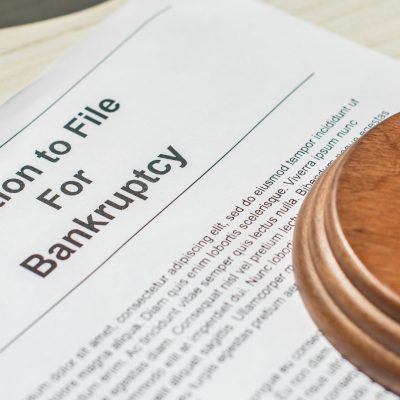If you’re a business owner in financial difficulty, consider bankruptcy an option. But what exactly is the default, and how does it work? This guide will walk you through the basics of bankruptcy so you can make an informed decision about the right choice for your business.
What is bankruptcy, and what are the different types of bankruptcy filings?
Bankruptcy can be complex and intimidating, but it doesn’t have to be. Essentially, bankruptcy is the legal way in which individuals or businesses who owe more than they can repay are offered an opportunity to resolve their debt obligations. Bankruptcy filings vary according to several factors, such as asset protection or income, and often fall into one of several categories. The most common filing type is Chapter 7 bankruptcy, which involves liquidating non-exempt assets to pay creditors. Alternatively, individuals may opt for Chapter 13 bankruptcy, which allows for reorganizing debts and repayment through a structured plan. Lastly, small businesses might pursue Chapter 11 bankruptcy to reorganize debts and reestablish operations. Understanding the different types of bankruptcy will help you make the best choice for you or your business when facing financial hardship.
Why do people or businesses file for bankruptcy protection?
Bankruptcy can be a difficult decision to make, but one that can ultimately benefit both businesses and individuals. When unexpected costs or lack of access to resources cause someone to become unable to pay off their debts, filing for bankruptcy protection can be immensely helpful in providing relief from these financial struggles. It not only allows debtors to agree with creditors on how the debt will be paid back, but it also provides them with additional legal protections that safeguard against debt collection and harassment during this time. Filing for bankruptcy is often a last resort for those who have exhausted all other options, yet it enables them to make a fresh start financially and reclaim control over their lives.
How does the bankruptcy process work in the United States?
The bankruptcy process can be daunting and overwhelming, but it is essential to know your options if you or your business are in financial distress. In the United States, one could qualify for several types of bankruptcy, and the decision of which type to use should be made with appropriate legal counsel. Generally speaking, the bankruptcy filing process requires you to file a petition with the court system detailing any assets that could be used to satisfy creditors’ claims. From there, a court-appointed trustee will review your case and determine if filing bankruptcy was necessary and how much of your debt can be canceled due to the chosen chapter of bankruptcy. Once all of this has been processed by the court, you will receive an official notification confirming whether or not your debts have been discharged. Although understanding the process is essential to achieving a healthier financial situation, it’s always best to consult with professionals when navigating this complex area of law.
What are some of the common misconceptions about bankruptcy proceedings?
Bankruptcy proceedings can seem overwhelming and intimidating, but it’s essential to understand the reality of it to make an informed decision. Numerous misconceptions surrounding bankruptcy should be addressed, such as ‘bankruptcy is the end of the world’ or ‘you can never recover financially after filing for bankruptcy.’ The truth is that bankruptcy may be a positive step for those who need it, providing the chance for a fresh start by reorganizing financial affairs and offering legal protection from creditors.
Filing for bankruptcy does not mean all your debts will necessarily be erased or that you must give up everything you own; instead, a lawyer like a chapter 7 bankruptcy attorney, for example, or a court-appointed trustee, will work with you to develop an appropriate debt repayment plan. With proper guidance and education on the matters involved in declaring bankruptcy, individuals and businesses can take proactive steps to secure their financial futures.
How can filing for bankruptcy help individuals and businesses get back on their feet financially speaking?
Filing for bankruptcy is a powerful tool that can help individuals and businesses find relief when they struggle to pay their bills. Declaring bankruptcy is a process that eliminates the burden of debt by allowing debtors to discharge some or all of their obligations. This can give individuals and businesses a fresh start and the time they need to get back on their feet financially. It may also pave the way for more success in the future since it clears financial obstacles and provides access to affordable repayment plans. In some instances, filing for bankruptcy can restore an individual or business’s good credit standing over time.
Are there any negative consequences to filing for bankruptcy that people should be aware of before deciding to do so?
Filing for bankruptcy can be a difficult and emotional decision, but it does not always have to lead to adverse outcomes. Although bankruptcy can help provide a reprieve from debt collectors and creditors, it is essential to be aware of the potential drawbacks before making the decision. Credit score implications and other long-term financial effects could follow in the years ahead, depending on the type of bankruptcy filing chosen. Additionally, certain types of assets may not be covered by bankruptcy protection, which could leave them subject to seizure or liquidation under certain circumstances. Before proceeding, it is essential to know what lien holders will be affected by the bankruptcy and any consequences they may have. To make an informed decision regarding filing for bankruptcy, individuals and businesses should first equip themselves with a thorough understanding of the potential consequences.
Bankruptcy can be complex and confusing, but it doesn’t have to be. You can make the best decision for yourself or your business with the correct information. If you’re considering bankruptcy, we hope this guide has given you a better understanding of what it is and how it works. You should now also have a good idea of some common misconceptions about bankruptcy proceedings and the potential benefits and drawbacks of filing for bankruptcy. As always, we would like to encourage you to speak with an experienced bankruptcy attorney before deciding whether to file for bankruptcy protection.



